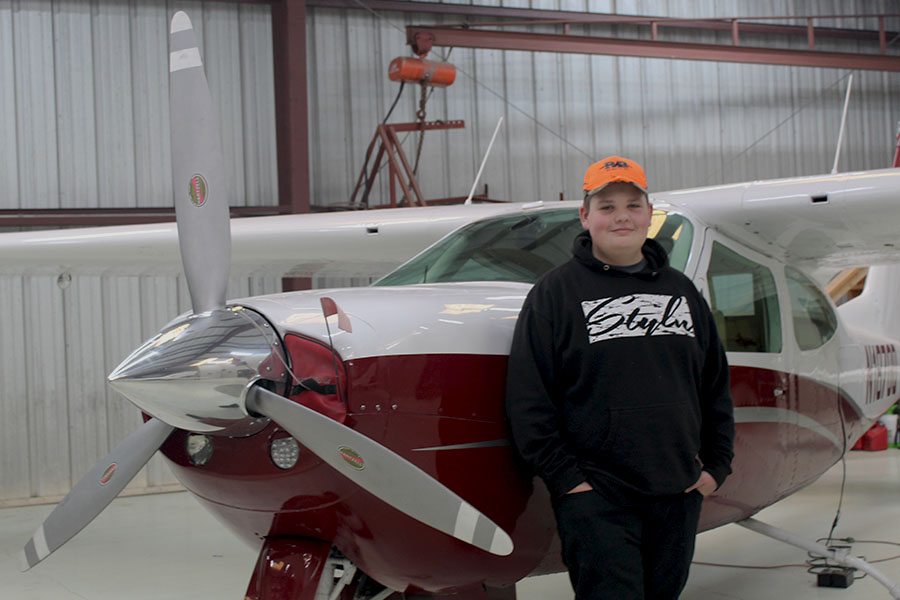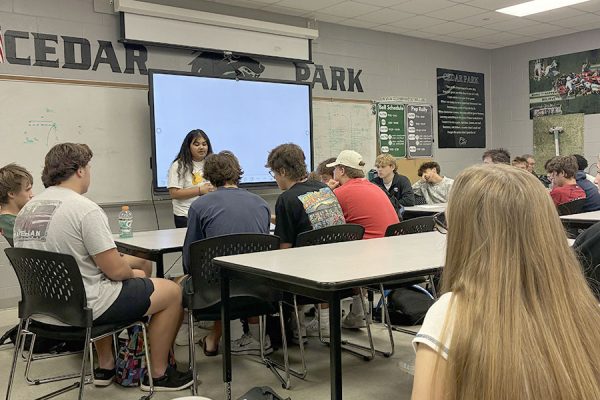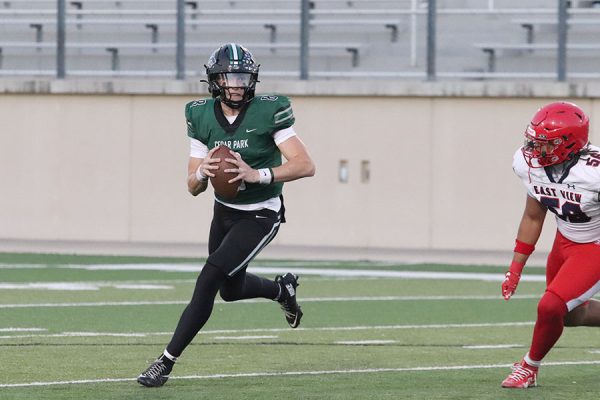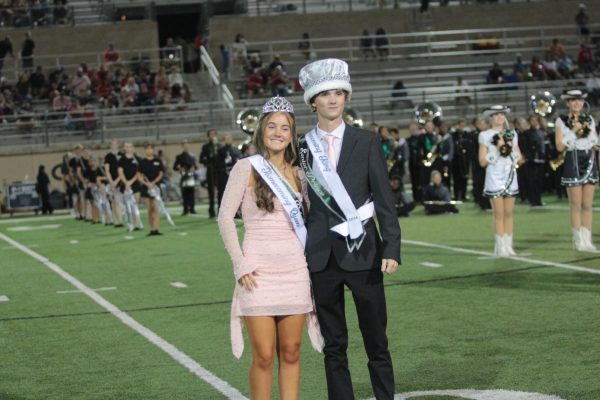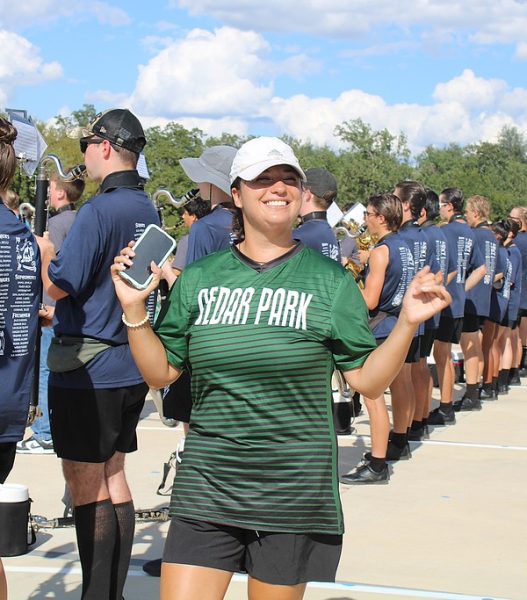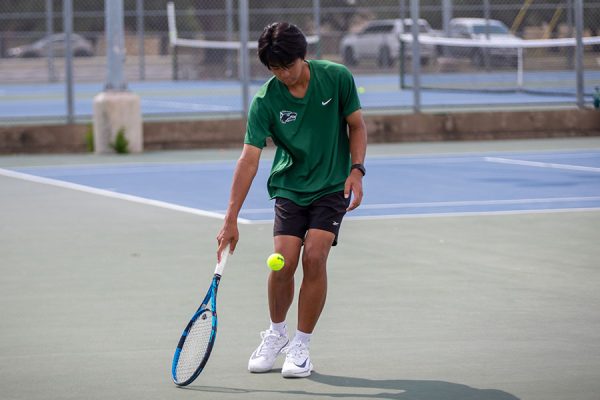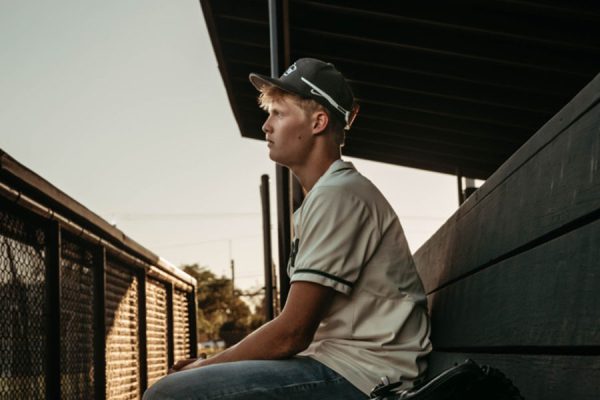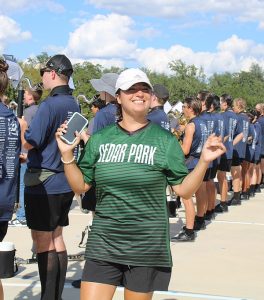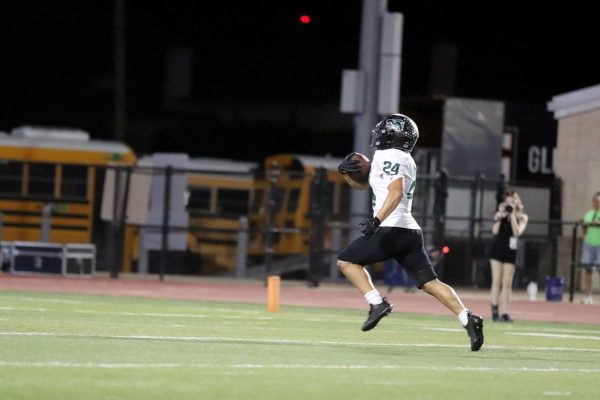Young Wings
Freshman Shares Experience Flying Airplanes
Standing in front of his Cardinal Airplane, Freshman Alex Trebilco reminisces about the good times he’s had in it. “I really like the Cardinal,” Trebilco said. “It’s really fast, it flies well, and she’s always treated us good.”
March 26, 2020
The gusts of wind created by the propellers of the airplane wafts through the vents that had just been pushed opened, marking off yet another item from the checklist that has to be followed before take off. Each step that is followed ensures a sense of safety for the pilot and the passengers. Going over a list three times may seem overwhelming, but for freshman Alex Trebilco, it’s just one step, out of many, that he takes before he is prepared to fly.
Flying airplanes for six years and starting from a young age of nine, Trebilco said that his love for the vehicle came from the influence of his father, who had been in the business before he came along, and according to Trebilco, the overall awestruck feeling he gets when he is around them creates an even stronger fondness.
“I’ve been flying in airplanes pretty much my whole life,” Trebilco said. “My father has been [flying] since he was my age, and he was the one who introduced me to [them], but I [became] interested in them because it just amazed me how they flew. It’s been something I’ve always wanted to do.”
Admitting that he doesn’t have his pilot’s license yet because he is not 17, Trebilco is still able to fly with the guidance of an instructor, or his father, while he trains for the permitted document.
“It’s kind of like a driver’s license,” Trebilco said. “You take a test, the difference is there’s no parent taught section. You’re with someone they call a ‘dual instructor’ so that means you’re on the controls and he’s right there next to it guiding you and helping you. It’s 100 hours per dual and you have to pass a medical [exam] and have a certain amount of solo hours. When you’re 16 the instructor says you can fly solo within a 20 mile radius of the airport, and then pass a written exam and an oral exam.”
In order to get an airplane into the air, there is a checklist that must be followed to ensure the plane’s safety.
“To prepare the plane I do what is called a ‘pre-flight,’ [which is] done for small planes like mine all the way up to jetliners,” Trebilco said. “I check to make sure everything is in working order and also check the fluids like oil and gas. I check the oil because without it, or even enough of it, the engine will blow up, and I check to see if there’s any condensation in the gas.”
Although most of the duration before the flight is occupied with the “pre-flight” process, it is also very mentally consuming. Trebilco said he has to take time to think about the flight before he boards the plane.
“When I prepare to fly I mentally start to focus on nothing but flying, and keep all other things out of my mind,” Trebilco said. “I start to think about the weather, such as winds and ceilings, and other things of that nature. When you prepare to fly you have to stay two steps ahead of the plane otherwise the airplane gets ahead and that’s not a good situation to be in. One time [I] was flying and [I] had just gotten in the airplane and noticed the gear was being slow. We tried to put it down for landing and that day it just didn’t come down. In that moment we had to exclude everything else and focus on the problem, focus on ‘what am I go[ing] to do now?’ [and] ‘how am I go[oing] to fix this?’ We got through it, we went through the checklist, we got the gear down and we landed. It was a good, happy day.”
Through all of his six years of flying, Trebilco has had the opportunity to fly several different planes, some including speed planes and others include training planes.
“I have flown six different planes,” Trebilco said. “I’ve flown a Cardinal, a Super Decathlon, a 172, an Air Coupe, a 150 and 140. Each of them are different in the ways they are configured. The cardinal is a high speed complex airplane, it’s smooth and it’s meant to go fast. The 172 is meant to go slow for training, the 140 is also just an old training airplane, and the Super Decathlon flips around.”
While many small planes of his variety look very similar on the outside, they are all different on the inside and each has different components that make them either easier or more difficult to fly.
“The complexity of the airplane and the speed of the airplane [makes them different],” Trebilco said. “When I’m flying the 172 in comparison to the cardinal, the cardinal is a lot sleeker and a lot faster. The gear goes up and down and it has more complicated avionics. It has a constant speed prop[ellar] which means the prop actually moves, it’s fuel injected, has more complicated systems on it and I have to deal with all of these different things. On the 172 the gear doesn’t move, it has a steady speed and I don’t mess with the prop. It’s just easier to fly all around.”
Despite being a 15-year-old controlling an airplane thousands of feet in the air, Trebilco said that knowing he’s so far up in the air is not a frightening thought for him at all because he believes in the plane he’s flying.
“It’s not scary for me because I have faith in the airplane,” Trebilco said. “If you don’t have faith in the airplane then you’re [in trouble]. It’s proven to work, it’s worked every time, and even if something was to catastrophically go wrong, I’m still not worried because we’re trained to deal with it. If we lose an engine we’re trained to deal with it, we’re trained to do all this and keep everybody calm.”
Regardless of the amount of years Trebilco has been flying, there are still moments when things have gone wrong and he has to remember all the training he’s been through to stay calm and persevere.
“I was flying the 140 and we were landing on a dirt strip and one of the wheels hit a pothole,” Trebilco said. “It tipped up on it’s nose and then sat back down. Thank God it didn’t go over, but the guy we were flying to was supposed to have that runway closed off but he forgot to close it. You know it was pretty cool and a good experience. Most people who would have experienced that would stop flying but really it just furthered my interest in flying because something that bad happened and we were all fine, the airplane was fine, and everything was alright.”
With all of the experience Trebilco has under his belt, flying to different states and controlling different airplanes, he has come to acquire many memories. Even with it all, his favorite part of flying is the environment that he immerses himself in.
“I think flying through clouds is pretty cool,” Trebilco said. “It puts into perspective how fast you’re actually going because looking at the ground or sky doesn’t seem like you’re going that fast, but if you look at the clouds then it just gives a nice reference, it’s truly pretty rad.”
Infographic- http://create.piktochart.com/output/45267696-preflight-checklist

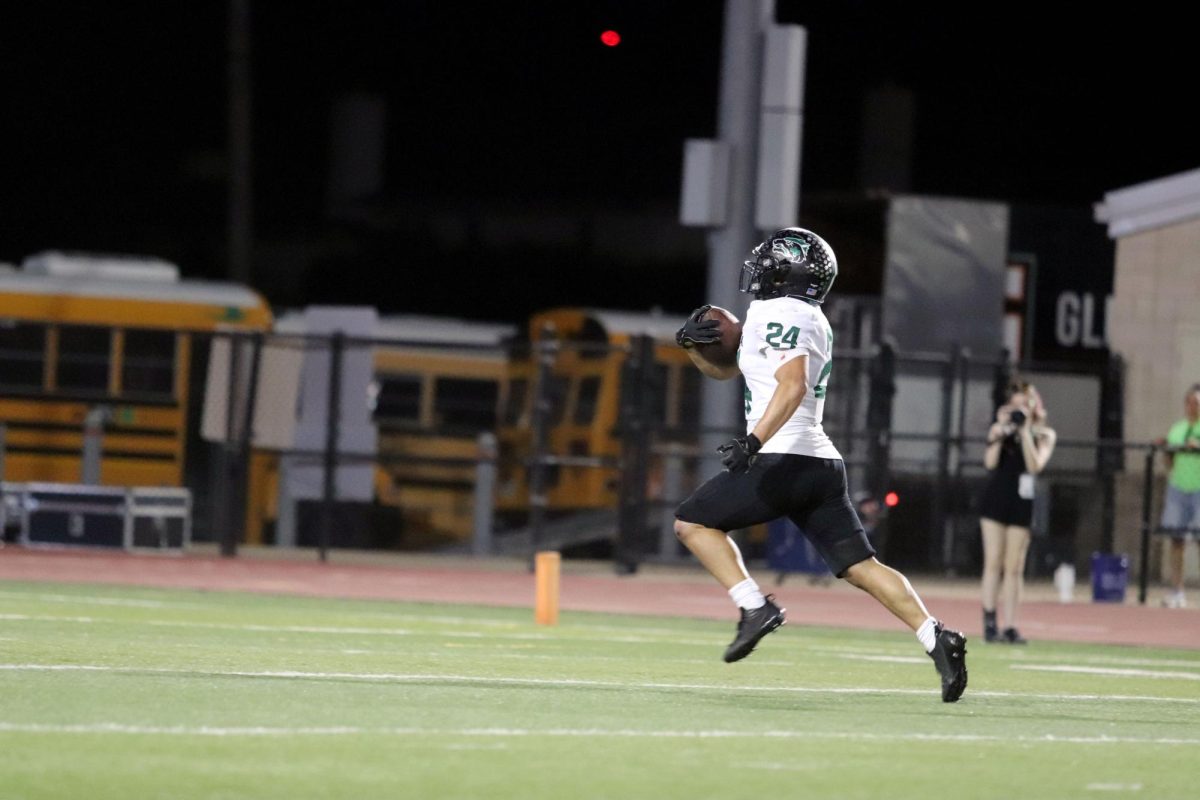

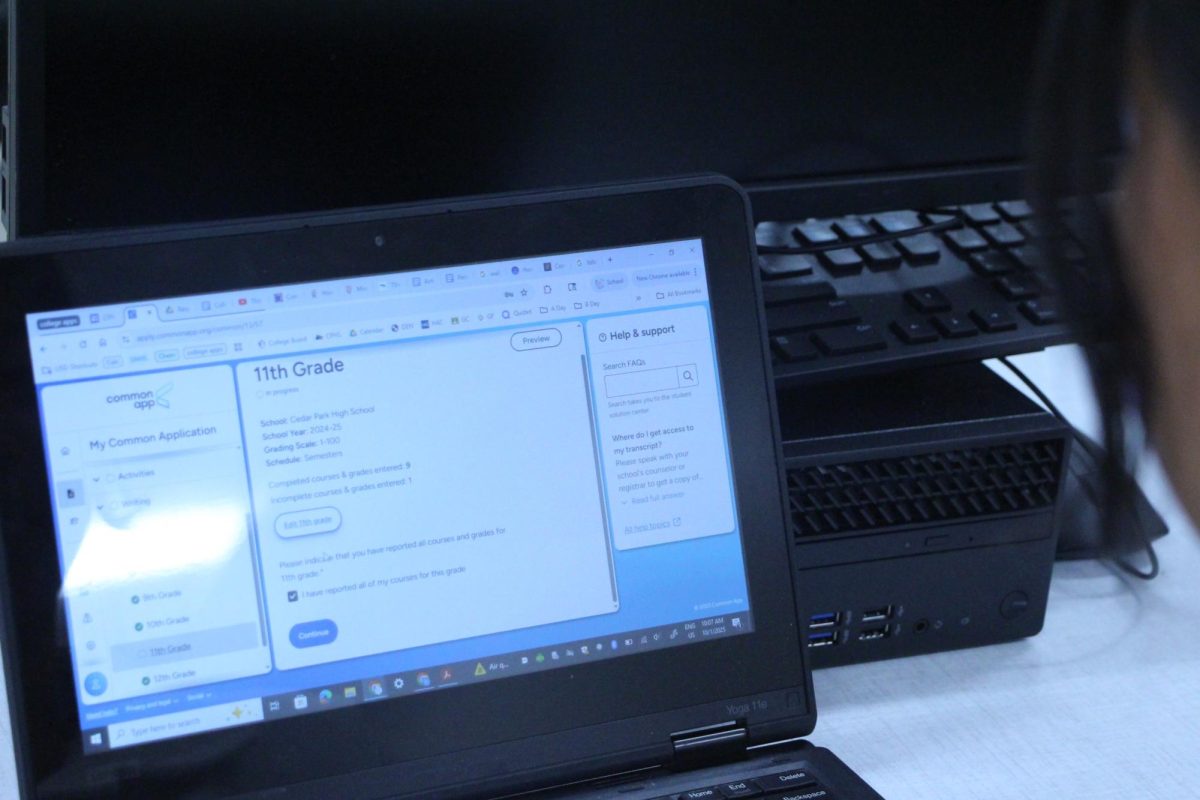
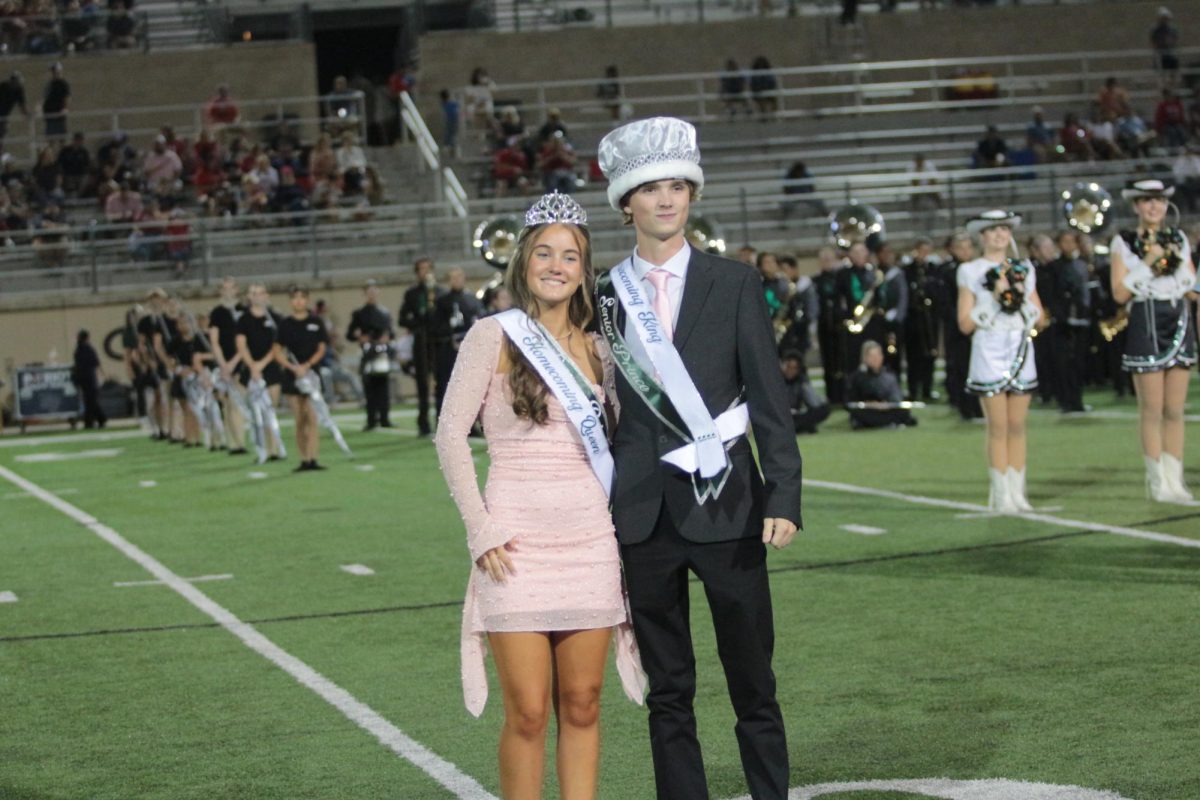

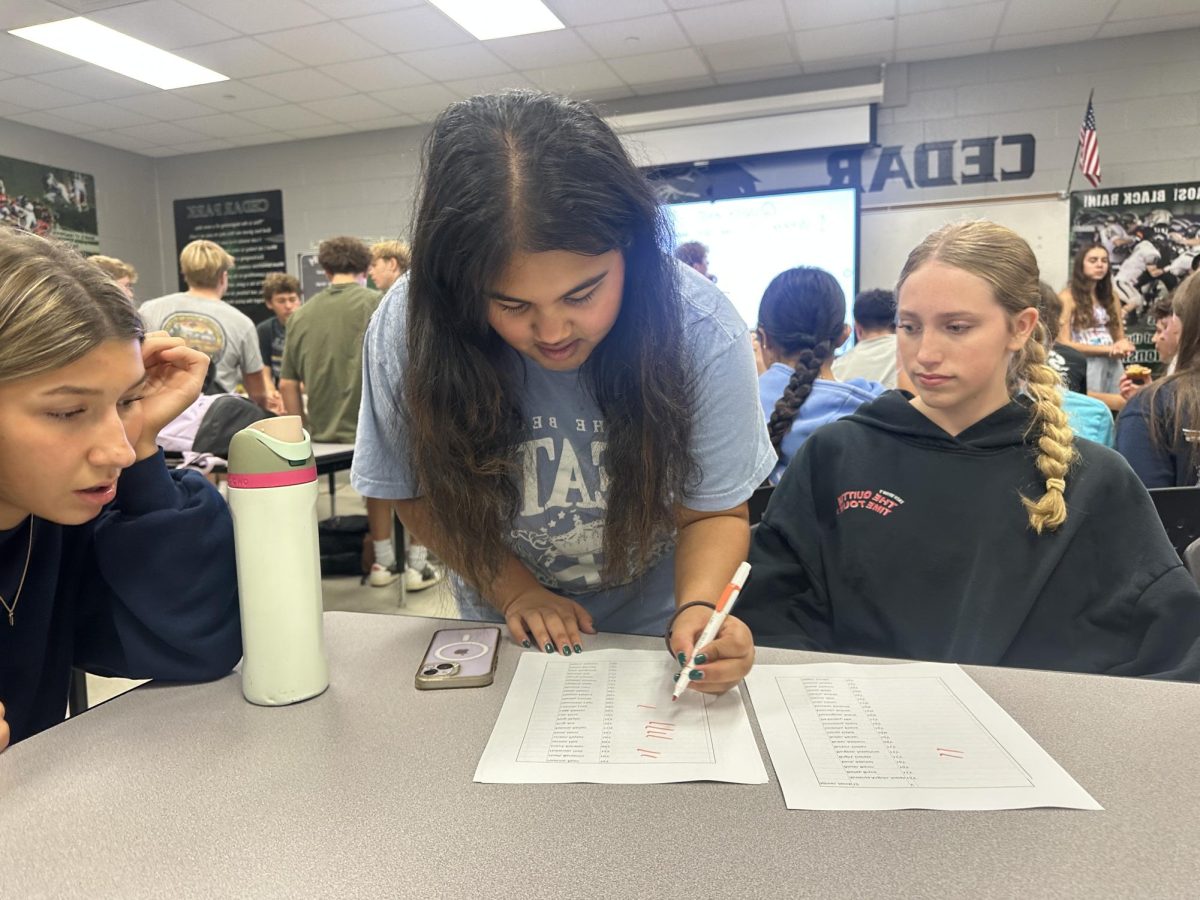



![Broadcast, yearbook and newspaper combined for 66 Interscholastic League Press Conference awards this year. Yearbook won 43, newspaper won 14 and broadcast took home nine. “I think [the ILPC awards] are a great way to give the kids some acknowledgement for all of their hard work,” newspaper and yearbook adviser Paige Hert said. “They typically spend the year covering everyone else’s big moments, so it’s really cool for them to be celebrated so many times and in so many different ways.”](https://cphswolfpack.com/wp-content/uploads/2025/05/edited-ILPC.jpg)



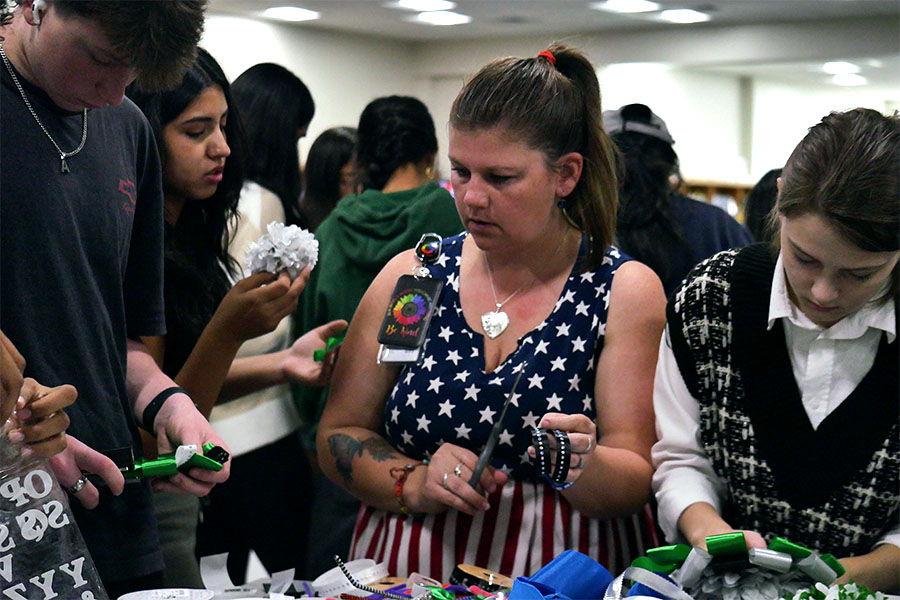

![Looking down at his racket, junior Hasun Nguyen hits the green tennis ball. Hasun has played tennis since he was 9 years old, and he is on the varsity team. "I feel like it’s not really appreciated in America as much, but [tennis] is a really competitive and mentally challenging sport,” Nguyen said. “I’m really level-headed and can keep my cool during a match, and that helps me play a bit better under pressure.” Photo by Kyra Cox](https://cphswolfpack.com/wp-content/uploads/2025/09/hasun.jpg)

![Bringing her arm over her head and taking a quick breath, junior Lauren Lucas swims the final laps of the 500 freestyle at the regionals swimming competition on date. Lucas broke the school’s 18-year-old record for the 500 freestyle at regionals and again at state with a time of 4:58.63. “I’d had my eye on that 500 record since my freshman year, so I was really excited to see if I could get it at regionals or districts,” Lucas said. “ State is always a really fun experience and medaling for the first time was really great. It was a very very tight race, [so] I was a bit surprised [that I medaled]. [There were] a lot of fast girls at the meet in general, [and] it was like a dogfight back and forth, back and forth.” Photo by Kaydence Wilkinson](https://cphswolfpack.com/wp-content/uploads/2025/03/Kaydence-2.7-23-edit-2.jpg)
![As her hair blows in the wind, senior Brianna Grandow runs the varsity girls 5K at the cross country district meet last Thursday. Grandow finished fourth in the event and led the varsity girls to regionals with a third place placement as a team. “I’m very excited [to go to regionals],” Grandow said. “I’m excited to race in Corpus Christi, and we get to go to the beach, so that’s really awesome.” Photo by Addison Bruce](https://cphswolfpack.com/wp-content/uploads/2025/10/brianna.jpg)











